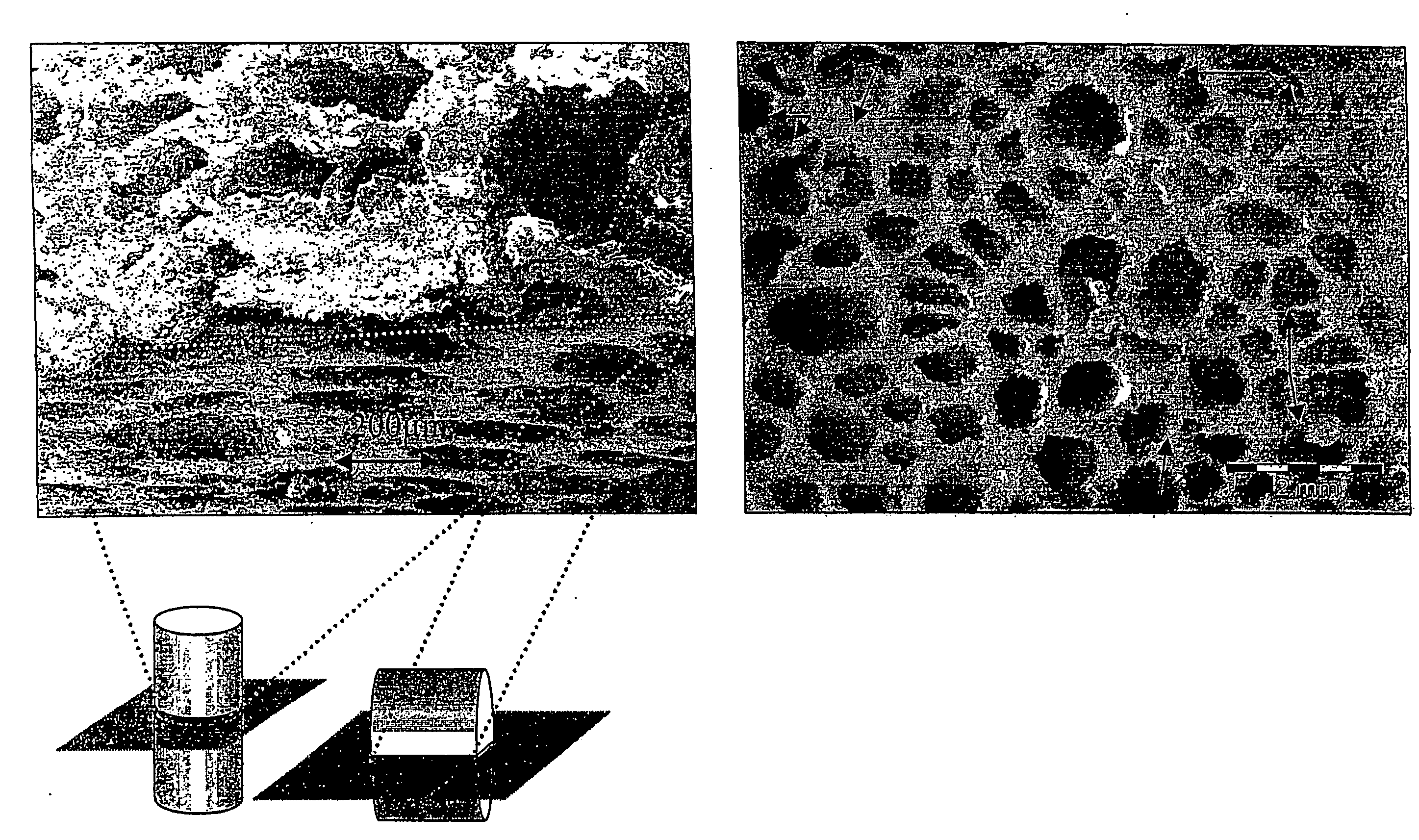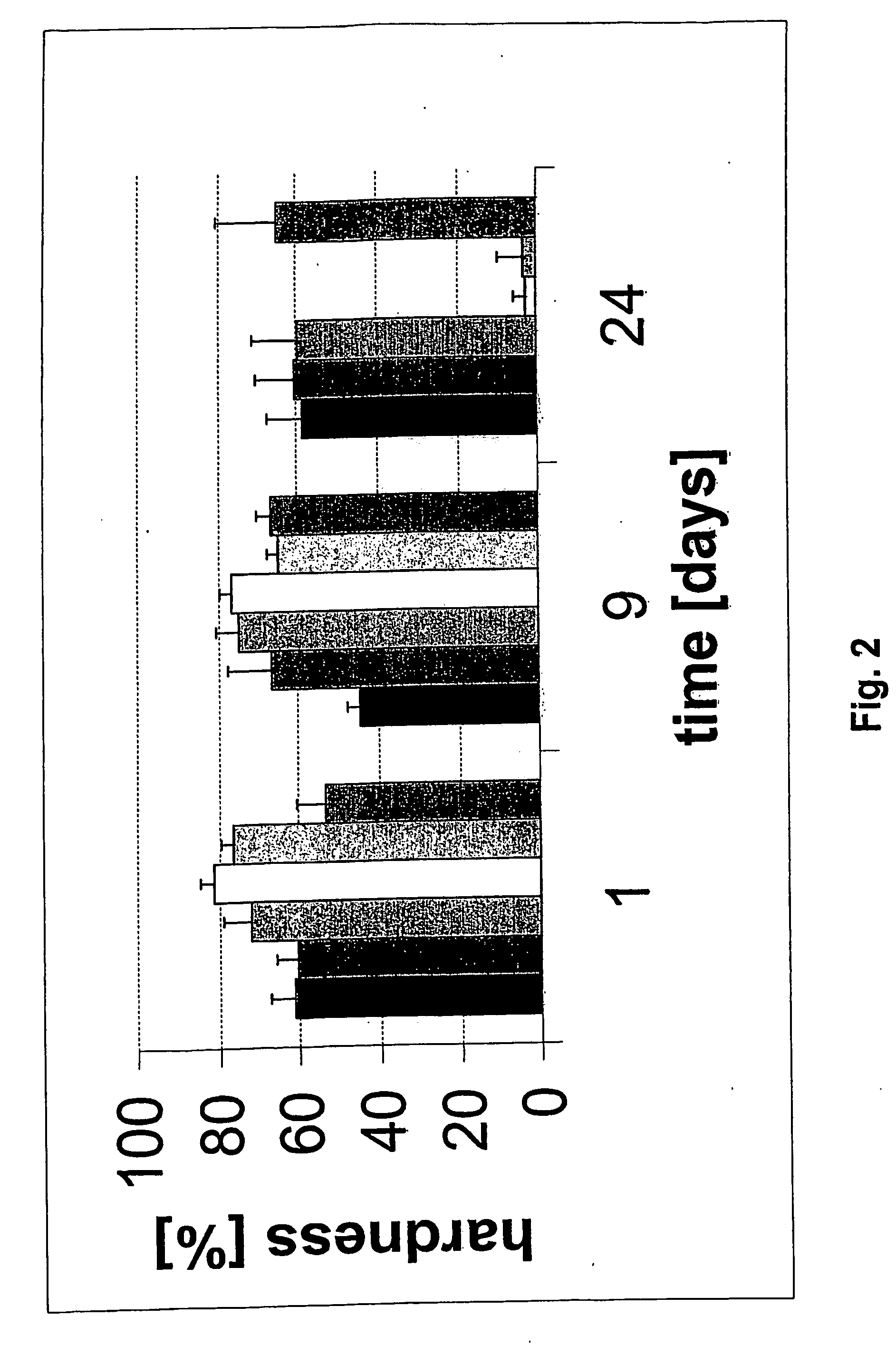In situ hardening paste, its manufacturing and use
a technology of hardening paste and in situ hardening, which is applied in the field of medical technology, can solve the problems of limited access, lack of material, biopsies of autologous bone graft material, etc., and achieve the effects of improving macroporosity, reducing the burden of high polymer content, and improving mechanical strength and resistance to washou
- Summary
- Abstract
- Description
- Claims
- Application Information
AI Technical Summary
Benefits of technology
Problems solved by technology
Method used
Image
Examples
example 1
Coating of beta-TCP powder with rhGDF-5
[0307]333 mg beta-TCP and 147 μl rhGDF-5 in 10 mM HCl (3.4 mg / ml) was pipetted on the beta-TCP and absorbed. The damp powder was incubated for ca. 1 hour at 25° C. and dried in a subsequent lyophilization step.
example 2
Preparation of an IFS (rhGDF-5 / beta-TCP / PLGA / PEG 400)
[0308]167 μl PEG 400 and 83 mg PLGA were dissolved by gentle warming to get a viscous solution. After cooling at room temperature 333 mg coated rhGDF-5 beta-TCP powder was added under continuous stirring to get a homogenous paste.
example 3
Preparation of the IFS (beta-TCP / PLGA / PEG 400)
[0309]1 ml PEG 400 and 500 mg PLGA are dissolved by gentle warming to get a viscous solution. After cooling at room temperature the 2000 mg beta-TCP powder was added under continuous stirring to get a homogenous paste.
PUM
| Property | Measurement | Unit |
|---|---|---|
| diameter | aaaaa | aaaaa |
| particle size | aaaaa | aaaaa |
| density | aaaaa | aaaaa |
Abstract
Description
Claims
Application Information
 Login to View More
Login to View More - R&D
- Intellectual Property
- Life Sciences
- Materials
- Tech Scout
- Unparalleled Data Quality
- Higher Quality Content
- 60% Fewer Hallucinations
Browse by: Latest US Patents, China's latest patents, Technical Efficacy Thesaurus, Application Domain, Technology Topic, Popular Technical Reports.
© 2025 PatSnap. All rights reserved.Legal|Privacy policy|Modern Slavery Act Transparency Statement|Sitemap|About US| Contact US: help@patsnap.com



